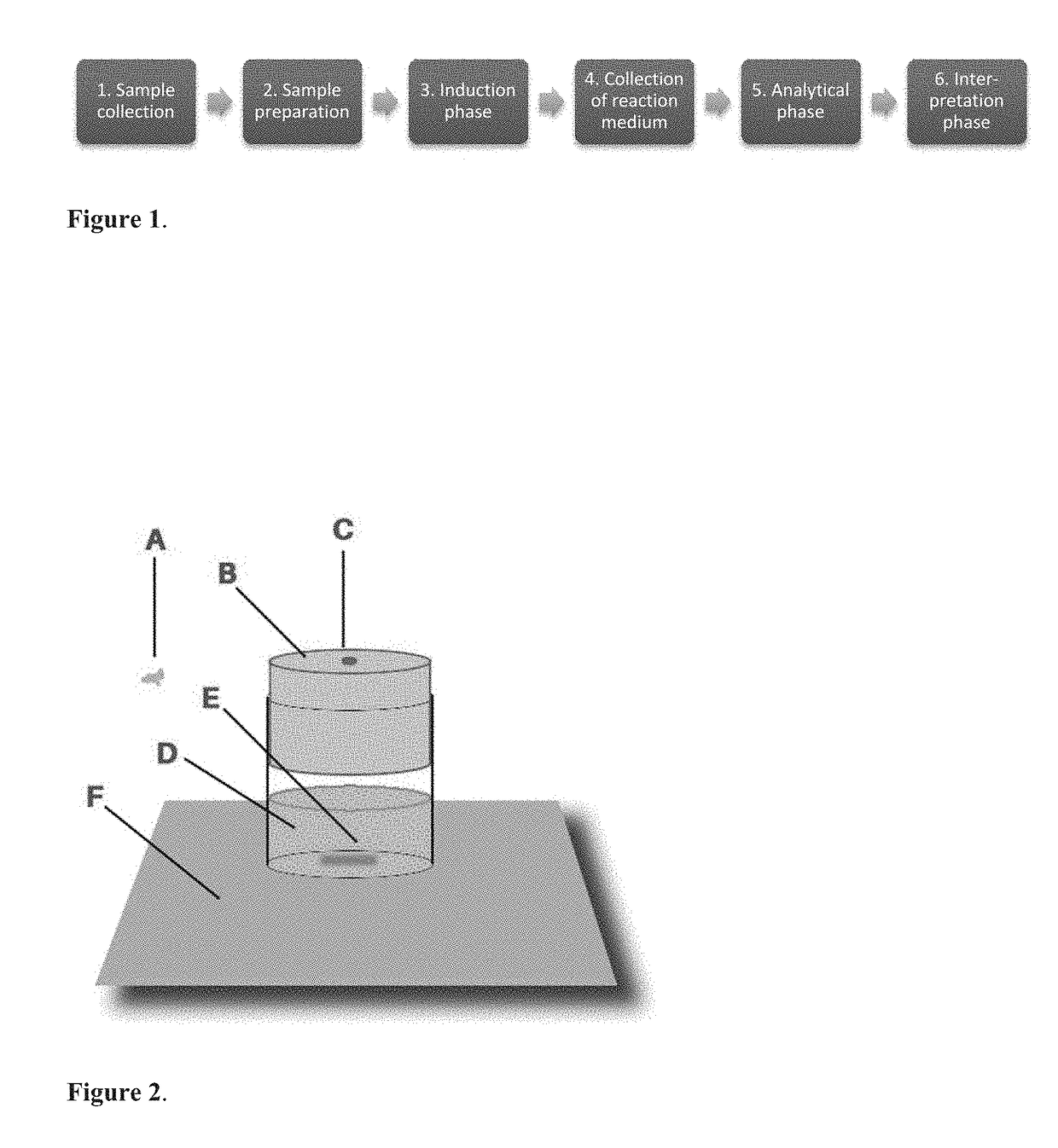Method for selecting patients responsive for cancer treatments
a cancer treatment and patient technology, applied in the field of cancer diagnostics and therapies, can solve the problems of high variability between results from different labs and even between different pathologists, difficult and controversial prediction of tumor aggressiveness, and low response rate of oncological drugs
- Summary
- Abstract
- Description
- Claims
- Application Information
AI Technical Summary
Benefits of technology
Problems solved by technology
Method used
Image
Examples
example 1
Quantification of Citrate and Amino Acids from MCF-7 Culture Cells
[0093]Experiments were performed on human breast cancer cells of the line MCF-7 to quantify mitochondrial citrate efflux in presence of different metabolic substrates.
1. Experimental Procedures
1.1. Preparation of Cells
[0094]Stock culture of MCF-7 cells was obtained from American Type Culture Collection (ATCC® Number: HTB-22™). The cells were grown as adherent monolayers in big T75 flasks (Greiner Bio-One GmbH, Germany) in low glucose (1.0 g / L) DMEM with stable L-glutamine (PAA Laboratories GmbH, Austria) that was supplemented with 1 mM Na-pyruvate (Gibco®, REF 11360-039), 10% heat-inactivated fetal bovine serum (FBS), 10 pg / mL human recombinant insulin (Gibco) and antibiotics: penicillin (100 U / ml), streptomycin (100 μg / ml) and gentamicin at a final concentration of 50 μg / ml. MCF-7 cells were grown and maintained at 37° C. in a humidified incubator containing 5% CO2 in air. The cells were sub-cultured at 2-3 day inter...
example 2
of Citrate Efflux Dynamics in MDA-MB-231 Culture Cells
1. Experimental Procedures
1.1. Preparation of Cells
[0109]Stock culture of MDA-MB-231 cells was obtained from American Type Culture Collection (ATCC® Number: HTB-26™). These cells were grown, harvested, washed and stored for analysis as described in Example 1.
[0110]The number of MDA-MB-231 cells in suspension (N) was measured by a hemocytometer (Goryaev's chamber) after 20-fold dilution by Mitomed B (cells in 15 small chambers were counted): N=(23+26+27+32+31) / 5×15×1111×20=9.27×10̂6 cells / ml.
[0111]In addition, aliquots (0.1 ml) of the cell suspension and Mitomed-B solution were collected for measuring protein content.
[0112]The experiments were carried out in an Oroboros oxygraph. Two parallel chambers on the same device were used. Reaction medium was Lahus-B (Table 3).
[0113]Saponine concetration suitable for viability of MDA-MB-231 cells was defined as 30 μg / ml. Malate, 2 mM, was present in all protocols in the r...
example 3
Quantification of Citrate from Human Breast Cancer Samples
[0118]Experiments were performed on permeabilized skinned fibers derived from human breast cancer cells to quantify temporal citrate efflux.
1. Experimental Procedures
1.1. Preparation of Fibers
[0119]In order to reach experiment targets, the sarcolemma and plasma membranes in skinned tumor fibers were completely permeabilized by saponin treatment keeping the mitochondrial membranes intact (both tumor and healthy tissue samples from the same patient were processed equally). Namely, skinned fibers were transferred into plastic vials with pre-cooled (on ice) Lahus-A (Table 8) containing 50 μg / ml saponin and incubated with mild stirring (at 40 rpm) for 30 min at 4° C. Permeabilized fibers were then washed in pre-cooled solution Lahus-B (Table 3) for 5 min under mild stirring; this washing procedure was performed three times to completely remove saponin and all soluble metabolites. The washed samples were placed into Lahus-B (Table ...
PUM
| Property | Measurement | Unit |
|---|---|---|
| time | aaaaa | aaaaa |
| temperature | aaaaa | aaaaa |
| respiration rates | aaaaa | aaaaa |
Abstract
Description
Claims
Application Information
 Login to View More
Login to View More - R&D
- Intellectual Property
- Life Sciences
- Materials
- Tech Scout
- Unparalleled Data Quality
- Higher Quality Content
- 60% Fewer Hallucinations
Browse by: Latest US Patents, China's latest patents, Technical Efficacy Thesaurus, Application Domain, Technology Topic, Popular Technical Reports.
© 2025 PatSnap. All rights reserved.Legal|Privacy policy|Modern Slavery Act Transparency Statement|Sitemap|About US| Contact US: help@patsnap.com



